Posts Tagged ‘mis-strike’
Have I found a rare coin? £2 ‘errors’ explained!
So you’ve noticed something’s not quite right with the £2 coin you’ve just found in your change. A quick google search of the strange variation you’ve noticed brings up a plethora of eBay listings and news articles claiming that you’ve just hit the jackpot and your ‘error’ coin is worth a small fortune!
Sadly, in this instance Google is not your friend and whilst genuine errors are out there, so too are a number of common mis-strikes and myths, or even fakes that have been manipulated to look like an error.
So what is the difference between a mis-strike and an error I hear you ask.
Put simply, a true error is caused by human mistake, such as the wrong die or metal being used to strike a coin, whereas a mis-strike is created by the mass production process, as hundreds of thousands of coins are struck, meaning variations are bound to occur, especially when dies and machinery become worn.
But which mis-strikes on the bi-metallic £2 coin should you be aware of?
I recently read Scott Wren’s article, ‘Bi-metallic “errors”… Why two is better than one’ published in Coin News which highlights some of the mis-strikes found on £2 coins and how their bi-metallic quality causes the differences to be something entirely more spectacular than those found on monometallic (single metal) coins.
Striking bi-metallic coins
In order to understand why mis-strikes on bi-metallic coins are often more pronounced than monometallic coins, it’s first a good idea to look into how these coins are produced.
When striking £2 coins, the first step is to punch a hole through a blank planchet to create the outer section. The inner core is taken from a different metal, sized to fit inside the outer ring.
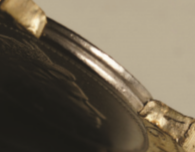
A groove is milled around the edge of the inner core so that when both parts are struck together, the metals will fuse as the outer ring deforms and spread into the groove, locking it into place.
Now that we know how £2 coins are struck, here are some of the mis-strikes and errors that can occur in the process…
The following images of variations found on £2 coins have been taken from Coin News for use in this blog.
Clipped Planchet
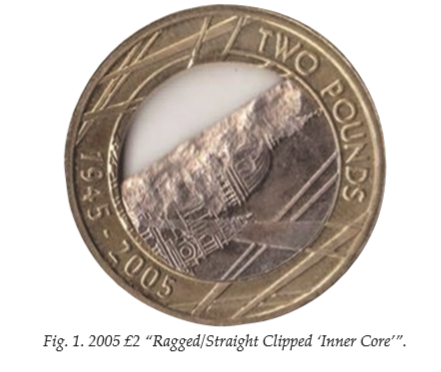
Figure 1 shows how the inner core was punched out from the end of the sheet of metal used for blanks, forming a straight or ragged edge clip.
Whilst this also occurs with monometallic coins, the pairing with an outer ring exposes a large gap which is much more noticeable.
The Royal Mint strike millions of coins each year so it is inevitable that variances will occur during the striking process and can’t always be picked up during quality control, despite the fact that this particular coin would weigh less than the standard 12g £2 coin. However, a small quantity of coins do sometimes manage to slip through the net and as i’m sure you’ll agree, they make for interesting collecting.
But before you pay over the odds for one of these coins, beware of fakers! Some coins are manipulated to look like mis-strikes or error coins and sold to unsuspecting buyers. Check the clipped planchet edge of the coin to see if it’s genuine by making sure the detail of the design fades away towards the edge rather than suddenly stopping, which would indicate the coin had been cut.
Off Centre Inner Core
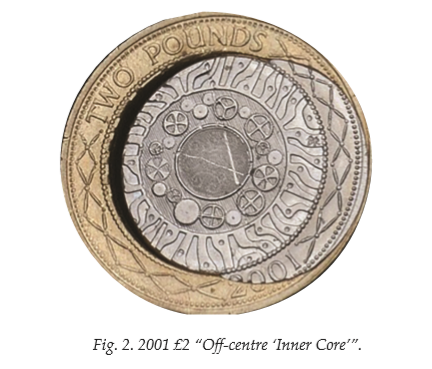
Figure 2 shows an inner core which hasn’t been united properly prior to being struck.
Due to the way the inner and outer core are struck together with the two metals being lined up and then fused together during striking, a misalignment will mean that the inner core spills into the outer ring, as seen in the image above. There might also be a gap between the two metals on the opposing join.
This mis-strike is thought to be fairly common on the bi-metallic 12 sided £1 coin as well as some of the Technology £2 coins and even foreign bimetallic coins, but have you ever spotted one in your change?
Faulty Outer Ring
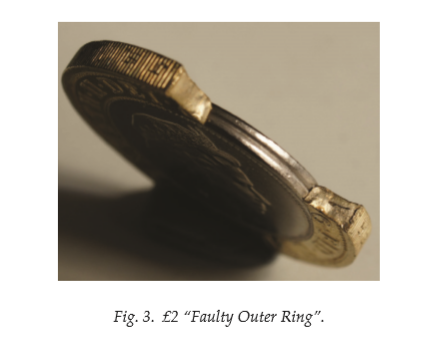
Figure 3 shows a faulty planchet or outer ring, where the inner core is exposed.
In the image above, you can actually see the specific engineering design features where the inner core is grooved to help the metal flow bond to the outer ring and fuse during striking.
Similar to the first mis-strike we looked at, this could be caused by a clipped planchet, this time created when the outer ring was punched, however coins like this may also be caused by tampering post striking, for example by fakers trying to replace the inner core of a £2 with another coin to pass off as a rare error.
The Holy Grail of Bi-metallic ‘Errors’
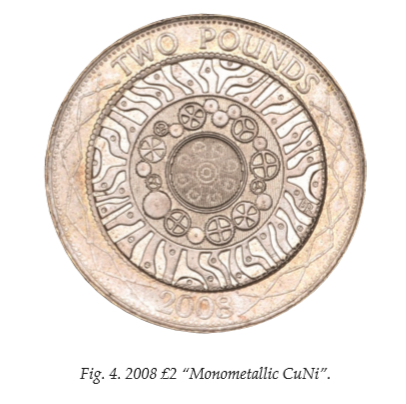
Figure 4 is described as the Holy Grail of bimetallic ‘errors’ and is the result of the nickel-brass £2 blank not having the inner core section punched out before being struck.
This means that the £2 coin is made from one full piece of nickel-brass, completely contrasting the very idea of a bimetallic coin.
A 2007 monometallic £2 was verified by The Royal Mint and in the email confirming the mis-strike it was mentioned that they had only seen 4-5 similar coins before.
This rare striking error is highly sought after and coins have achieved extraordinary prices in private sales and auctions.
Foreign Planchet
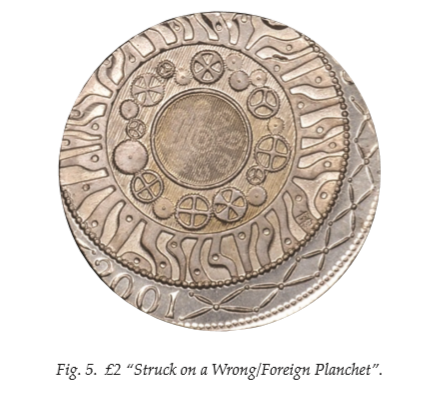
Finally, figure 5 shows a £2 design struck on the wrong planchet – a blank normally used to strike a different coin.
As The Royal Mint strikes a huge quantity of coins for different denominations and even different countries, blanks can sometimes end up in the wrong striking chamber, creating a wrong or foreign planchet error.
This is actually down to human error rather than a mis-strike and the coins would normally be picked out during quality control, however some have been spotted in circulation, not only on the £2 coin, but on various different denominations across UK coins and world wide.
One of the most famous examples in the UK is the silver 2p – a 2p coin struck on to a 10p blank which sold for 67,580 times its face value at auction.
Other £2 ‘errors’ that are worth keeping your eyes peeled for!
2014 First World War (Lord Kitchener) £2 – Two Pounds ‘Error’

This £2 coin was issued in 2014 to mark 100 years since the outbreak of the First World War. It features an image of Lord Kitchener who was a prominent figure on British government propaganda campaigns during the time.
5,720,000 of these coins entered circulation, meaning it could be quite easy to stumble across one in your change. However, a small number of these coins are supposed to have entered circulation without the ‘Two Pounds’ denomination on the obverse.
Sometimes the denomination of the coin will feature on the reverse design, meaning it won’t appear on the obverse too. This can be seen on the Trinity House £2 coin which was issued earlier in the same year as the First World War £2.
It’s possible that the dies used to strike the obverse of the Trinity House £2 coin wasn’t replaced when the production of the First World War Centenary £2 coins began, resulting in the absence of a denomination.
We’ve only heard of two reports of these ‘error’ coins being found in circulation. However, Lockdales Auctioneers officiated the sale of the very first one back in March 2020 to the value of £500! A hefty return on a £2 coin…
Have you ever seen this £2 ‘error’? We’d love to know in the comments below.
So how much is my ‘error’ coin worth?
These mis-strikes and errors certainly make for interesting collecting and the rarer variations, such as monometallic £2 coins could certainly sell for over face value.
In fact, one such monometallic mis-strike found on a 2007 Technology £2 is estimated to be worth over £1,000!
Ultimately, as with all coins, it’s all down to how much an individual collector is willing to pay to add that coin to their collection.
If you’ve found a £2 coin with a mis-strike, it’s certainly worth having it verified and authenticated by The Royal Mint, who will supply a letter detailing their findings.
So have you found any interesting variations on your bimetallic £2 coins? Let us know in the comments below!
With thanks to Scott Wren from Coin News.
If you’re interested in coin collecting, our Change Checker web app is completely free to use and allows users to:
– Find and identify the coins in their pocket
– Collect and track the coins they have
– Swap their spare coins with other Change Checkers
Sign up today at: www.changechecker.org/app
£1 mis-strikes make headline news
The 12 sided £1 coin has made front page news time and again from members of the public spotting mis-struck £1 coins in their change.
However, it’s important to be aware that these headlines vastly overstate the scale of the problem.
1.5 billion £1 coins were struck – that’s 30 coins a second – for the new £1 release in March 2017, so it is inevitable that some variances have occurred during the striking process, affecting a small number of coins.
But remember, mis-strikes and variances are not the same as genuine errors.
Here are some of the mis-strikes that have been reported so far:
One coin found in Birmingham by Sarah O’Donoghue was thought to have melted in the middle causing the Bi-Metallic part of the coin to bleed into one another. However, this isn’t actually the case and is in fact likely to be because of a ‘bad’ or misaligned blank being used leading to this particular mis-strike.
This particular mis-struck £1 coin, and a few others that have been found recently, are undoubtedly numismatic curiosities. It is certainly possible that these coins will fetch a little more than face value in the near future by interested collectors. However, the minting process is never completely exempt from human error, so it is worth checking your change carefully.
“It is very unlikely that there is a serious problem with the new £1 coins. With the large amount of coins that were struck ready for the launch in 2017, it is inevitable that there will be some variances among a small number of the £1 coins. With the coins causing excitement in the press and more people than ever checking their change, these mis-strikes are cropping up more than usual.” – Ian Glen (Change Checker Managing Director)
The ‘polo’ pound
There have also been reports of new £1’s missing the middle section of the coin BUT collectors should beware.

As a word of warning to those wanting to get hold of one of these coins, don’t be fooled into spending more than you need to.
It is relatively easy to prize the two parts of metal apart by freezing the coin and using a chisel to knock the middle section out.
Ultimately these mis-strikes are unlikely to make anyone rich, but they are undoubtedly very interesting and would make an exciting addition to any coin collection.
Find out about all the the differences that have been spotted in the 12 sided £1 here.
As I mentioned earlier, mis-strikes are not the same as genuine errors. BUT there are some errors to be aware of, such as the dual dated £1. Click here to find out more.
If you’re interested in coin collecting, our Change Checker web app is completely free to use and allows users to:
– Find and identify the coins in their pocket
– Collect and track the coins they have
– Swap their spare coins with other Change Checkers

Sign up today at: www.changechecker.org/app
Just Discovered: Rare “Inverted Effigy” £2 Coin
It’s time to really start examining your change again.
Change Checker has just been able to confirm that a small number of “Inverted Effigy” £2 Coins have entered circulation.
First discovered by a Change Checker, and now confirmed as genuine by The Royal Mint, this unusual strike appears on a handful of the 2015 Britannia £2 Coins.
The Royal Mint has accounted for the seemingly impossible misalignment of the Queen’s effigy as “almost certainly the result of one of the dies working loose and rotating during the striking process”.
The result is that the Queen’s head is offset by around 150 degrees compared to the Britannia design on the reverse of the coin.
Just how rare is the Inverted Effigy £2 Britannia?
The Royal Mint is unable to give any indication of how many Inverted Effigy coins have entered circulation but we can make some initial estimates.
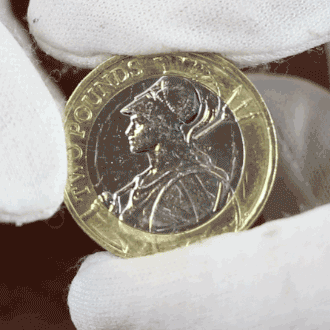 The first-year 2015 £2 Britannia is already one of the most-scarce circulating £2 coins ever issued with just 650,000 coins passing through banks and cash centres. That already places it third equal in the all-time low mintage charts.
The first-year 2015 £2 Britannia is already one of the most-scarce circulating £2 coins ever issued with just 650,000 coins passing through banks and cash centres. That already places it third equal in the all-time low mintage charts.
We have analysed 5,000 circulation coins and our results suggest that the Inverted Effigy may have affected as few as 1 in 200 of the coins struck – in other words around just 3,250 coins.
Of course, if the Inverted Effigy is a consequence of the die slipping during the striking process, it is possible that there may be other variations where the Queen’s head is less or more misaligned as the die has worked its way out of position.
Errors, mis-strikes and myths
Of course, given the many million coins The Royal Mint strike each year, it is to their immense credit that mis-strikes and errors are so few and far between. But, of course, when they do arise, they cause great collector excitement, as some of these other examples pay testament to.
- The Undated 20p – read more
- The “Silver” 2p – read more
- The 2014 Year of the Horse Silver £2 – read more
But there are a few myths out there too – upside down edge lettering, the “Pemember” Gunpowder Plot £2 coin and the “Necklace” £2 coin, which all have perfectly normal explanations.
Buyers beware
But finally a note of caution. I’m sure in time we’ll see some “examples” of the Inverted Effigy £2 for sale online. Before you think of buying one, please beware. Are you seeing a genuine Inverted Effigy or just a coin that someone has rotated in a photograph to make it look inverted?


